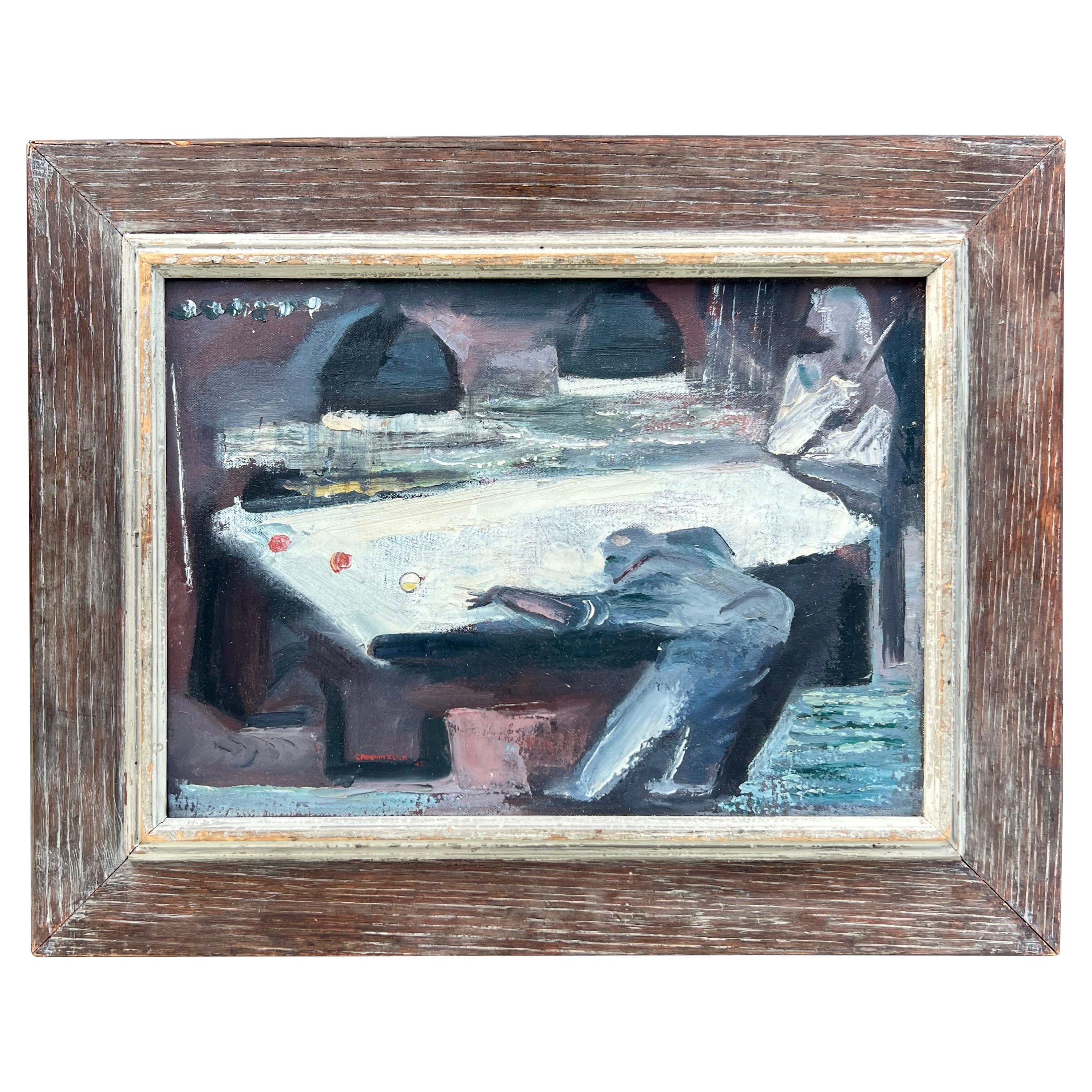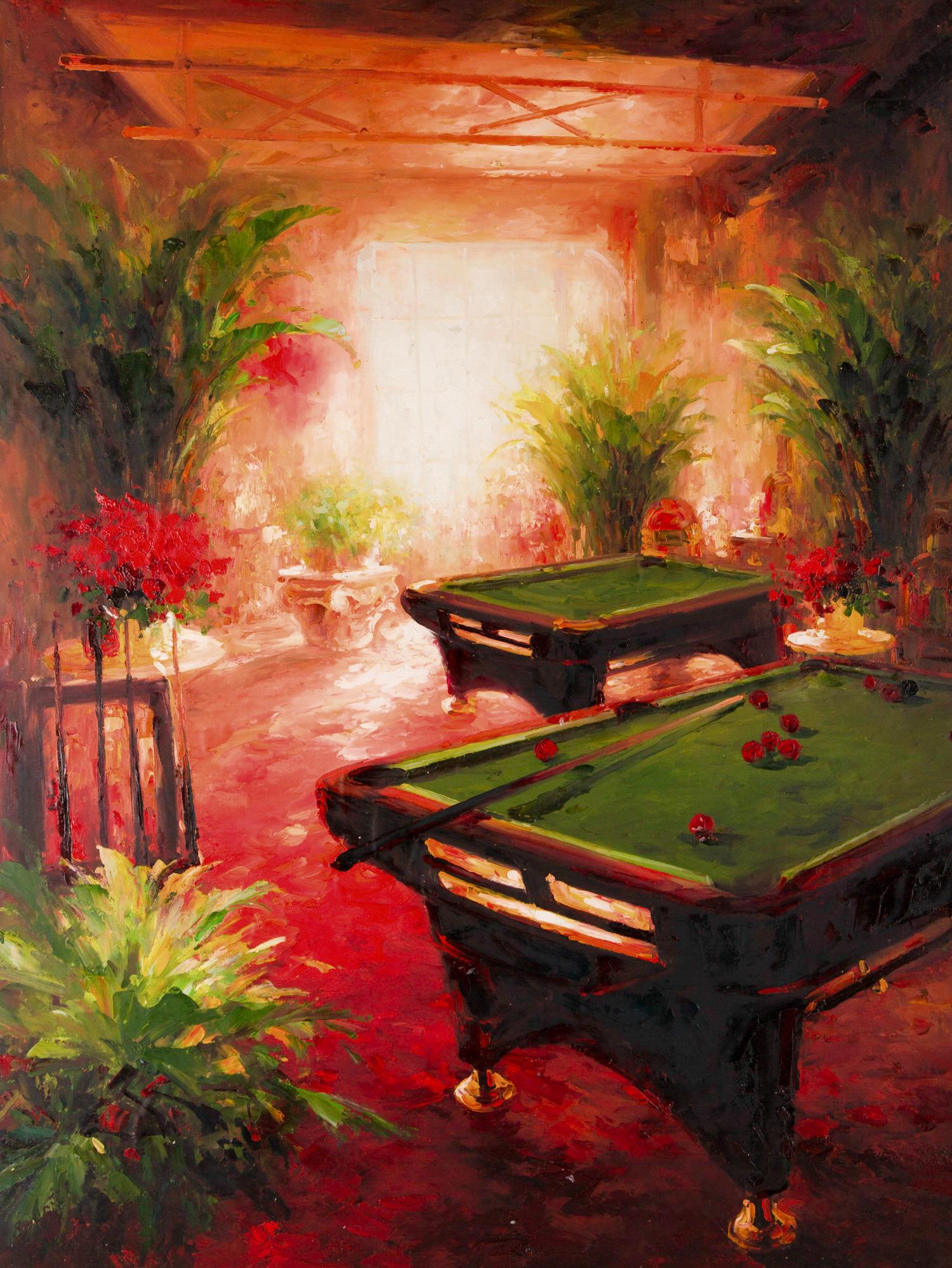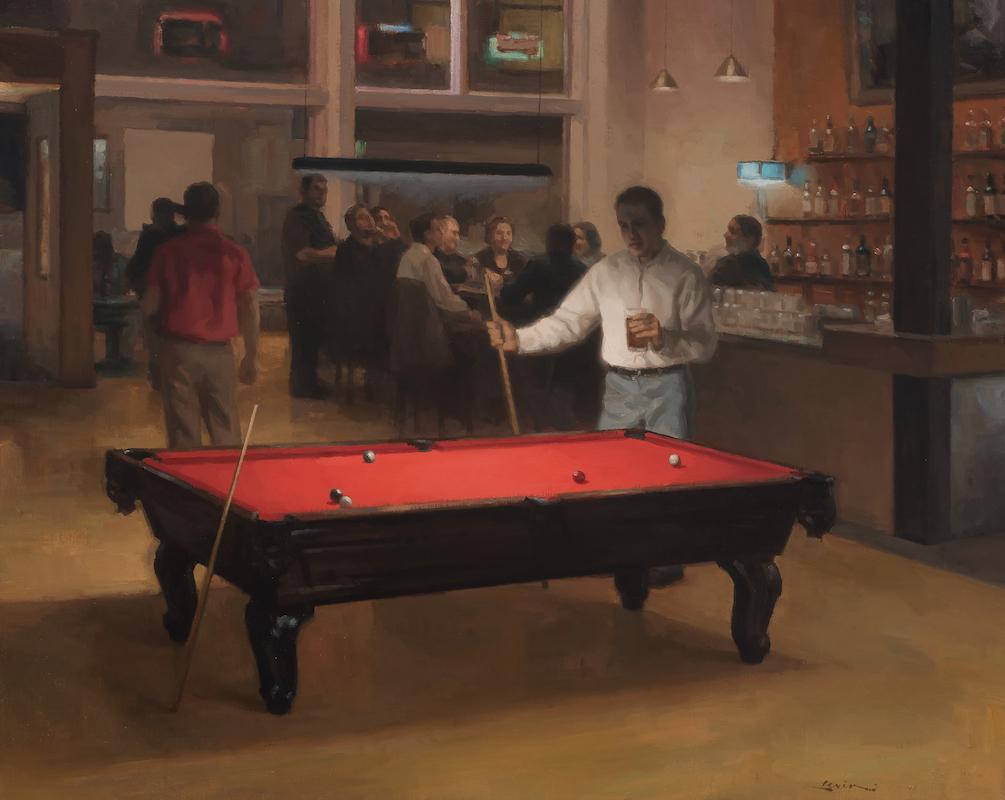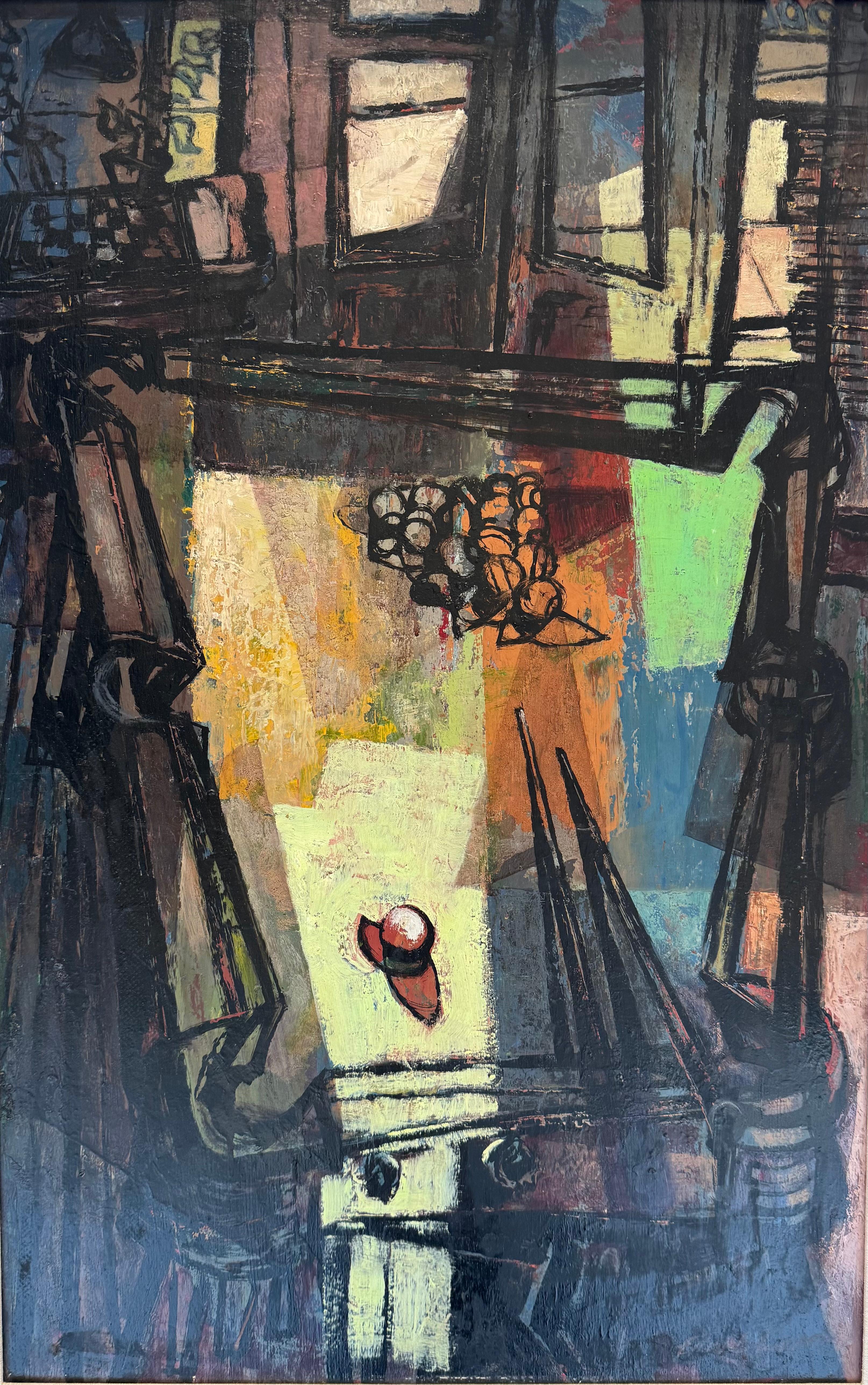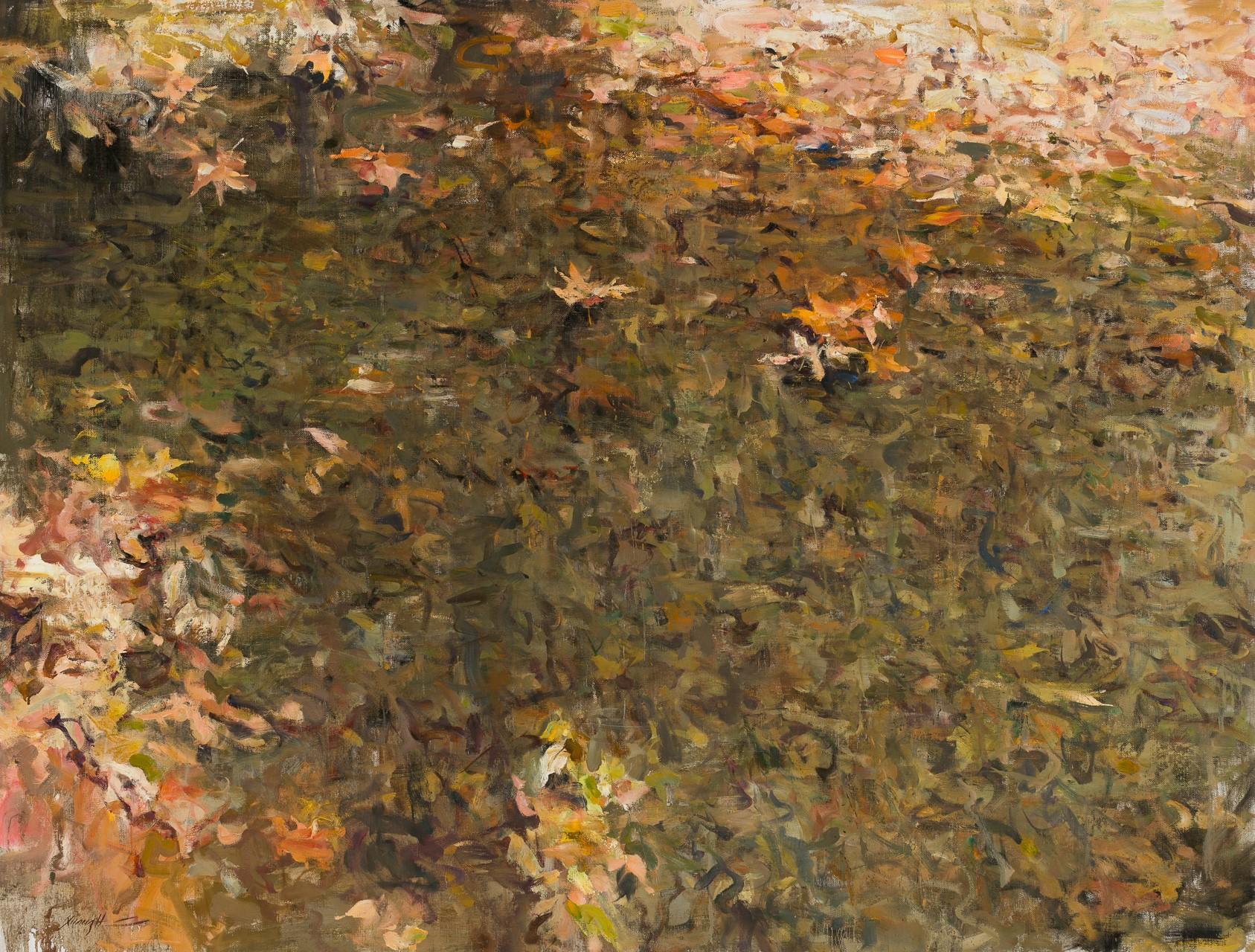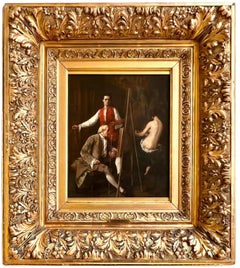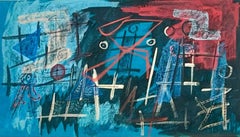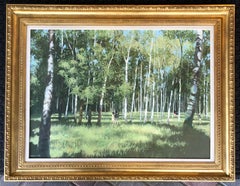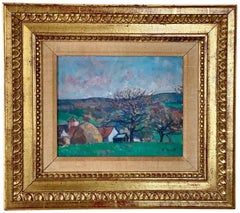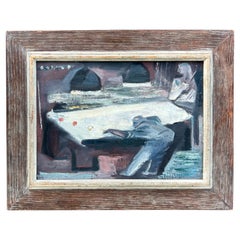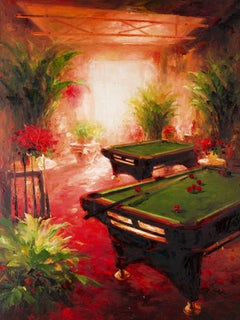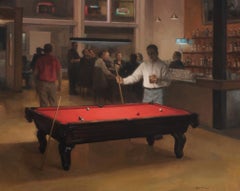Items Similar to The Pool Players
Want more images or videos?
Request additional images or videos from the seller
1 of 9
Vincent Campanella 1The Pool Players1945
1945
$3,800
£2,872.33
€3,300.82
CA$5,291.48
A$5,886.55
CHF 3,085.80
MX$71,932.21
NOK 39,293.86
SEK 36,989.73
DKK 24,639.34
Shipping
Retrieving quote...The 1stDibs Promise:
Authenticity Guarantee,
Money-Back Guarantee,
24-Hour Cancellation
About the Item
Oil on artist board signed and dated lower right featuring pool players playing a point match in the pool hall. Great WPA feel and texture impasto. Most likely the original frame measuring 15.25" x 19.25" overall.
Born in New York in 1915, Campanella studied at the Leonardo Da Vinci Art School where the curriculum was based on the Naples Academy founded in the 1440s. He took this classical Renaissance training to the streets of New York, then-rural Astoria, Monhegan Island, and Wyoming.
As an easel artist for the Works Progress Administration (WPA) in the 1930s he painted and taught in Rock Springs, Wyoming. There his style became Abstract and works of Classical Abstraction were recognized in art reviews and exhibitions. He was represented by the Rehn Gallery in New York until the death of Frank Rehn in 1956. His work has been shown at The Art Institute of Chicago, Carnegie Institute, Brooklyn Museum, Corcoran Art Gallery, Denver Museum, Metropolitan Museum of Art, Pennsylvania Academy of Fine Arts, San Diego Museum, San Francisco Museum, Seattle Museum, Toledo Museum, Whitney Museum of American Art, and the Universities of Nebraska, Tennessee and Wyoming. He was a Fellow at the MacDowell Colony in 1968. Retrospective shows of his work have been held at Hunter College (1995) and the Albrecht-Kemper Museum of Art (2007).
Campanella taught at the University of Wyoming (1940), Columbia University (1946-49), the Kansas City Art Institute (1949-52) and Park College (1952-80). Notable students include Robert Morris, Wilbur Niewald and Dik Browne.
Campanella was Thomas Hart Benton's closest friend. When Benton died, Mrs. Benton asked Campanella to complete her late husband's final painting.
- Creator:Vincent Campanella 1 (1915 - 2001)
- Creation Year:1945
- Dimensions:Height: 15.25 in (38.74 cm)Width: 19.25 in (48.9 cm)Depth: 1 in (2.54 cm)
- Medium:
- Movement & Style:
- Period:
- Condition:
- Gallery Location:Wiscasett, ME
- Reference Number:1stDibs: LU506310488542
About the Seller
5.0
Vetted Professional Seller
Every seller passes strict standards for authenticity and reliability
Established in 1999
1stDibs seller since 2016
109 sales on 1stDibs
Typical response time: 2 hours
- ShippingRetrieving quote...Shipping from: Wiscasett, ME
- Return Policy
Authenticity Guarantee
In the unlikely event there’s an issue with an item’s authenticity, contact us within 1 year for a full refund. DetailsMoney-Back Guarantee
If your item is not as described, is damaged in transit, or does not arrive, contact us within 7 days for a full refund. Details24-Hour Cancellation
You have a 24-hour grace period in which to reconsider your purchase, with no questions asked.Vetted Professional Sellers
Our world-class sellers must adhere to strict standards for service and quality, maintaining the integrity of our listings.Price-Match Guarantee
If you find that a seller listed the same item for a lower price elsewhere, we’ll match it.Trusted Global Delivery
Our best-in-class carrier network provides specialized shipping options worldwide, including custom delivery.More From This Seller
View AllThe Painter and His Muse
By Benjamin Eugène Fichel
Located in Wiscasett, ME
Oil on panel signed in the lower right corner and presented in a period frame measuring 21" x 18.5".
Provenance:
Private Collection
Bradbury Art and Antiques, Wiscasset, ME
Benj...
Category
19th Century Baroque Figurative Paintings
Materials
Oil
Abstract Composition
By Louis Schanker
Located in Wiscasett, ME
Tempura on heavy paper, signed and dated 1945 lower left. The piece measures 23" x 30" including the frame and presents very well overall.
Provenance:
Willard Gallery, NYC
Brad...
Category
1940s Abstract Abstract Drawings and Watercolors
Materials
Tempera, Watercolor
Gathering Flowers
Located in Wiscasett, ME
Oil on canvas, 33" x 43" including the frame, 25" x 35" canvas only. Signed lower right and signed and inscribed in verso.
Henry Robertson Craig R.H.A., R.U.A. Scottish, 1916-1984...
Category
1950s Impressionist Landscape Paintings
Materials
Oil
The Farm
By François Gall
Located in Wiscasett, ME
Oil on canvas, signed in the lower right.
Measures 17" x 18.5" including the frame and 8" x 10.5" sight.
Francois Gall 1912-1987 French
Well listed artist in the Benezit. He was t...
Category
Mid-20th Century Post-Impressionist Landscape Paintings
Materials
Oil
$4,900
An Experienced Eye
Located in Wiscasett, ME
A skilfully rendered oil painting on board by Austrian artist Adolph Reich skifully expresses the careful consideration and focus of a vintner or distiller as they study and are abou...
Category
Early 20th Century Victorian Interior Paintings
Materials
Oil, Board
Industry Along the River
By Joseph Wolins
Located in Wiscasett, ME
Signed lower left, dimensions listed include the frame.
Joseph Wolins was born in Atlantic City, New Jersey in 1915. He studied at the National Academy of Design from 1935 to 1941 un...
Category
1950s Post-War Landscape Paintings
Materials
Oil
$2,900 Sale Price
50% Off
You May Also Like
"The Pool Players" by Vincent Richard Campanella
By Vincent Campanella
Located in Wiscasset, ME
Oil on artist board signed and dated lower right featuring pool players playing a point match in the pool hall. Great WPA feel and texture impasto. Most likely the original frame measuring 15.25" x 19.25" overall.
Born in New York in 1915, Campanella studied at the Leonardo Da Vinci Art School where the curriculum was based on the Naples Academy founded in the 1440s. He took this classical Renaissance training to the streets of New York, then-rural Astoria, Monhegan Island, and Wyoming.
As an easel artist for the Works Progress Administration (WPA) in the 1930s he painted and taught in Rock Springs, Wyoming. There his style became Abstract and works of Classical Abstraction were recognized in art reviews and exhibitions. He was represented by the Rehn Gallery in New York until the death of Frank Rehn in 1956. His work has been shown at The Art Institute of Chicago, Carnegie Institute, Brooklyn Museum, Corcoran Art Gallery, Denver Museum, Metropolitan Museum of Art, Pennsylvania Academy of Fine Arts, San Diego Museum, San Francisco Museum, Seattle Museum, Toledo Museum, Whitney Museum of American Art, and the Universities of Nebraska, Tennessee and Wyoming. He was a Fellow at the MacDowell Colony in 1968. Retrospective shows of his work have been held at Hunter College (1995) and the Albrecht-Kemper Museum of Art (2007).
Campanella taught at the University of Wyoming (1940), Columbia University (1946-49), the Kansas City Art Institute (1949-52) and Park College (1952-80). Notable students include Robert Morris, Wilbur Niewald...
Category
Vintage 1940s American Mid-Century Modern Paintings
Materials
Paint
The Billiard Player oil on canvas painting
By Fernando Botero
Located in Barcelona, Barcelona
Title: The Billiard Player
Artist: Anonymous
Technique: Oil on canvas
Dimensions: 39.4 x 31.9 in
Period: c. 2000
Condition: Good
Art Movement: Contemporary Figurativism, Neofiguratio...
Category
Early 2000s Contemporary Figurative Paintings
Materials
Canvas, Oil
$1,561 Sale Price
35% Off
Lin Hongdan Impressionist Original Oil Painting "Billiards"
Located in New York, NY
Title: Billiards
Medium: Oil on canvas
Size: 40 x 30 inches
Frame: Framing options available!
Condition: The painting is laid on the matt board and appears to be in excellent condition.
Year: 2000 Circa
Artist: Lin Hongdan...
Category
21st Century and Contemporary Impressionist Landscape Paintings
Materials
Canvas, Oil
The Pool Hall
By Steven J. Levin
Located in Sag Harbor, NY
A realist painting of people in a pool hall. The red pool table is the centerpiece of the painting, seemingly illuminating the space, and particularly t...
Category
2010s American Realist Interior Paintings
Materials
Canvas, Oil
Pool Table
By Edward L. Loper Sr
Located in Greenville, DE
Excellent example of Loper Sr.'s work from this period. Exhibited at the Delaware art Museum show titled "Edward L. Loper from the Prism's Edge". Signed lower right. 43.75" x 30.75" ...
Category
1960s Abstract Impressionist Abstract Paintings
Materials
Oil, Panel
Still Pool, Oil Painting
By Quang Ho
Located in Denver, CO
Quang Ho's "Still Pool" is an oil on board featuring a beautifully abstracted landscape.
About the artist:
Quang Ho was born on April 30, 1963, in Hue, Vietnam. He Immigrated to th...
Category
2010s Impressionist Still-life Paintings
Materials
Oil, Linen
More Ways To Browse
Pool Signs
Paintings By Vincent
Pool Oil Painting
Vintage Pool Signs
Pool Halls
Monhegan Paintings
Monhegan Island
Monhegan Island Painting
Carnegie Hall
Thomas Hart Benton Original
Paintings Of Room Interiors
Duane Hanson
Empty Chair
Bedroom Interior Oil Painting
Le Chateau Interiors
Jonathan Louis
Outdoor Heart Sculpture
Picasso Dog
